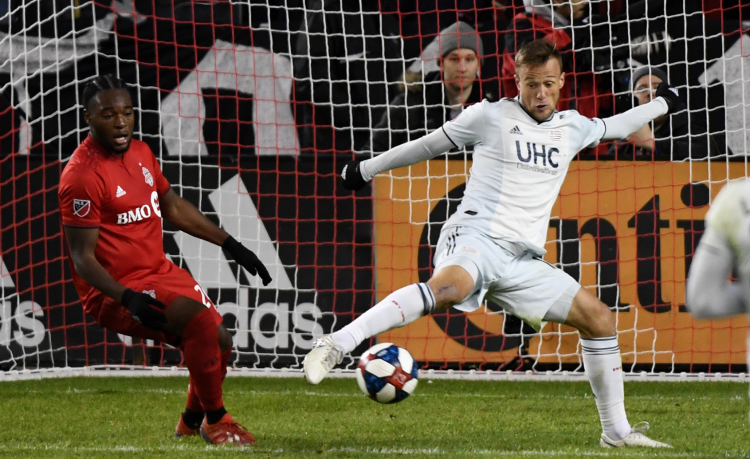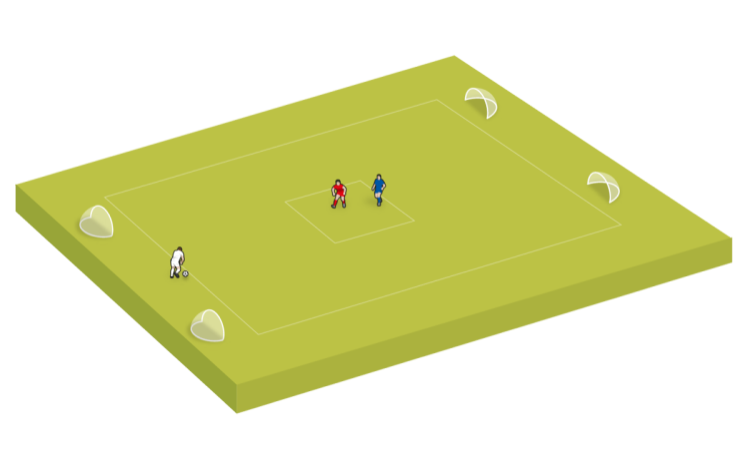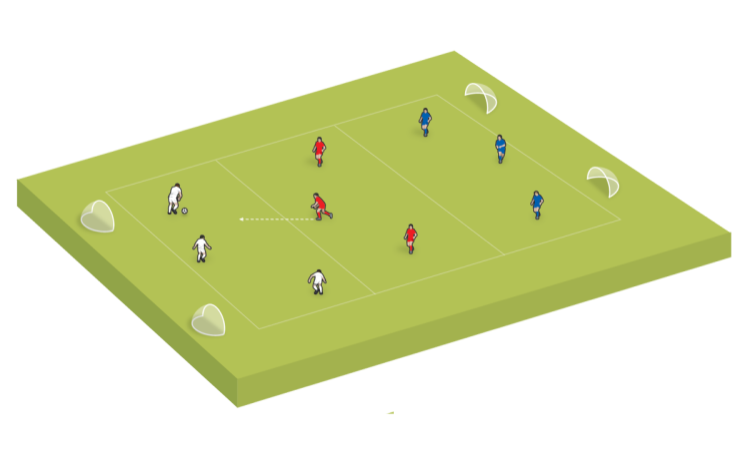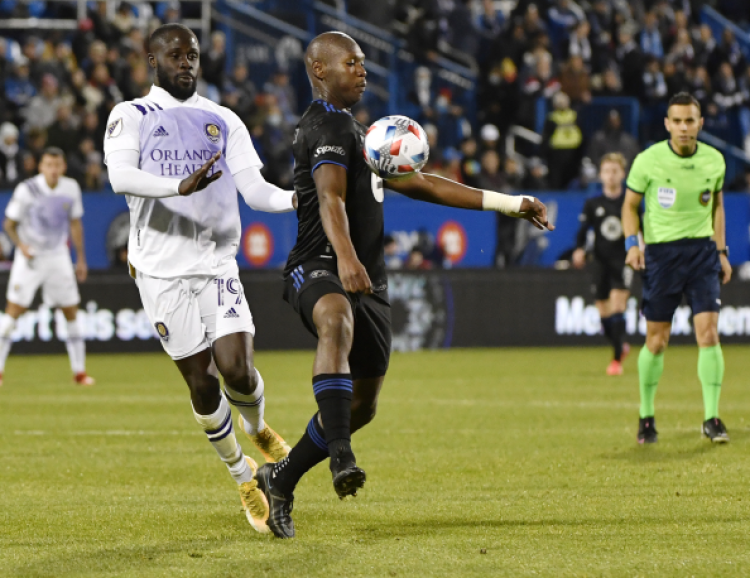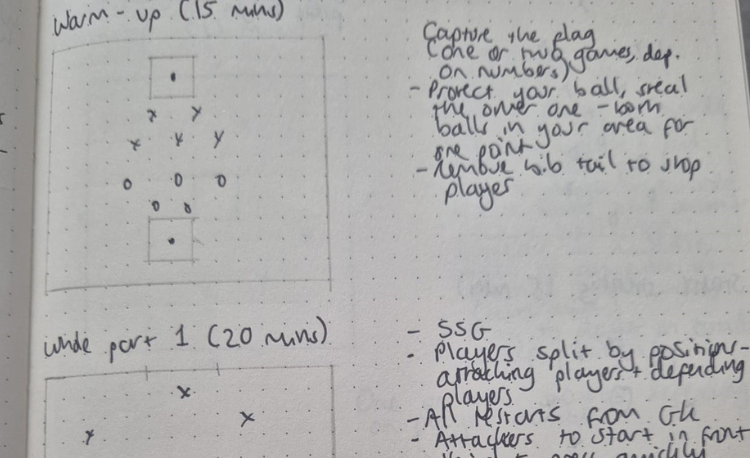What is intercepting?
Carl Wild provides a first-timer’s guide to stealing possession by cutting out passes, considering why we need to intercept, and how to go about doing it...
An interception takes place when a player prevents the ball from reaching its intended target.
In its simplest form, the ball does not get close to reaching the player it was meant for because an opponent has cut it off at some point along its journey.
On other occasions, it could be just about to reach the intended player when an opponent manages to get to the ball just before them. Either way, a player stops a pass from being completed.
Why do we need to intercept?
The main purpose of soccer is to have possession of the ball. Without the ball, you cannot score a goal.
By the same token, if the other team does not have the ball, they cannot score. Therefore, when a team has possession the opposition wants to win the ball from them.
This can be achieved in a number of ways, such as a player tackling an opponent, forcing a mistake - which often occurs when a player is pressed - or through intercepting.
The act of intercepting is usually used to stop a forward pass, with the aim of preventing the need for a tackle.
Intercepting a forward pass stops the opposition from progressing up the pitch and breaking lines. If a player fails to intercept a pass, it means the ball will go past them and, more than likely, all their team-mates in the same unit. The opposition have, therefore, been able to ‘break a line’.
"Intercepting a pass can provide a team with the opportunity to counter-attack..."
The other advantage that intercepting has over the other ways of winning the ball is the opportunities it then presents.
By intercepting a pass, a team can gain ‘good’ possession of the ball - that is to say they have won possession while the opposition are set up to attack, not defend.
In other words, intercepting a pass can provide a team with the opportunity to counter-attack.
What are the different ways to intercept?
Just before an opposition player has a first touch
In this instance, the player steals the ball before the opposition player has a chance to control it. When a player attempts to do this, they are usually positioned behind the intended target.
As they are behind their opponent, the player’s judgement as to whether they will be successful in intercepting is crucial. If they commit themselves and are unsuccessful, it could leave them and their team in a very dangerous position.
In their starting position, they are between the ball and their goal, a strong defensive position to be in. But as soon as they attempt to steal the ball, they are no longer able to protect the goal, as they will be on the wrong side. It is, therefore, essential that they are successful.
When making the decision of whether to try to steal the ball or not, a player needs to calculate whether they can reach the ball before it gets to their opponent.
They will need to consider the body shape and position of their opponent as well as the speed the ball is travelling. If the opponent is in the correct position and has the right body shape, it will make it very difficult for the player to get in front of them.
The player also needs to identify whether there is space for them to be able to move past their opponent and reach the ball. In addition, they will need to use their body and strength to hold off their opponent.
As they move past them, they need to get their arm across and position themselves between the opponent and the ball.
While the ball is on the way to the opposition player
When the ball is intercepted while on the way to an opposition player, it is likely the player will be in front of their opponent.
To intercept effectively, the player needs to be able to anticipate and read the game, because it is unlikely they will intercept the ball without having to move their position.
If this does happen, it is more down to the pass not being executed correctly, rather than the position of the intercepting player.
A player making a pass will try to ensure there is a clear pathway between them and the intended target. The defender looking to make the interception cannot, therefore, be in this space to begin with. They will need to move into it as the ball is travelling.
To achieve this, the player must scan to identify the target their opponent is looking to pass to. The next step is to anticipate when the pass will be played.
They can then start to move into the space where the pass can be intercepted before the ball actually starts travelling, giving them a better chance of being successful.
A defender will need to identify signs that the pass is about to be made. For instance, before making a pass, a player will often identify the target by looking at them, before looking down at the ball. The kicking foot will then be raised - if they are using the inside of their foot to play the pass, their foot will also ‘open out’.
What do we do after intercepting?
As well as identifying chances to intercept, a player should be scanning to pick up information that will benefit them should they win the ball. This will help them identify what to do next.
As the opposition would not have been expecting to lose the ball, their players will be positioned to provide support so their team can retain possession. They will therefore be attempting to stretch the pitch, meaning there should be spaces available to exploit.
Players looking to intercept should scan for the positioning of their team-mates and where the space is in front of them. This will then allow them to play quickly should they win the ball and exploit the spaces.
Developing intercepting skills
Intercepting does involve some risk - but with that often comes reward.
Leaving a position and moving towards where the ball might go could open up spaces that the opposition can take advantage of - however, it can also be a really effective way of winning the ball and then starting your own attack.
The skills needed to be able to intercept successfully are also key skills that are needed throughout other areas of the game. A key difference between elite and non-elite players is their level of ‘game intelligence’ – part of this is the ability to read the game and work out what is going to happen.
Ideally, we want the players to be able to be proactive and predict, rather than be reactive.
Related Files
Newsletter Sign Up
Coaches Testimonials

Gerald Kearney, Downtown Las Vegas Soccer Club

Paul Butler, Florida, USA

Rick Shields, Springboro, USA

Tony Green, Pierrefonds Titans, Quebec, Canada
Subscribe Today
Discover the simple way to become a more effective, more successful soccer coach
In a recent survey 89% of subscribers said Soccer Coach Weekly makes them more confident, 91% said Soccer Coach Weekly makes them a more effective coach and 93% said Soccer Coach Weekly makes them more inspired.
*includes 3 coaching manuals
Get Weekly Inspiration
All the latest techniques and approaches
Soccer Coach Weekly offers proven and easy to use soccer drills, coaching sessions, practice plans, small-sided games, warm-ups, training tips and advice.
We've been at the cutting edge of soccer coaching since we launched in 2007, creating resources for the grassroots youth coach, following best practice from around the world and insights from the professional game.

